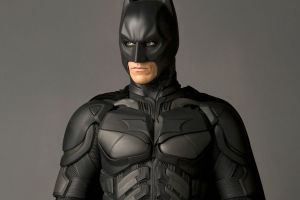Remember the first time you saw 3D glasses handed out before a film? It felt like magic—objects leaping off the screen, snowflakes brushing your face.
Now, imagine not just seeing the snow, but standing in the blizzard, turning your head to see the mountain behind you, hearing footsteps approaching from the left. That's not sci-fi anymore. It's happening—and it's changing how we experience stories.
We're no longer just watching movies. We're stepping into them.
Thanks to virtual reality (VR) and augmented reality (AR), the line between audience and story is blurring. And while big-budget films still dominate theaters, a quieter revolution is unfolding in living rooms, museums, and pop-up installations—where viewers don't just observe, they participate.
From Couch to Center Stage: VR's New Role in Storytelling
Traditional films guide your eyes—you see what the director wants you to see. But VR flips that control. Once you put on the headset, you decide where to look.
Take "Carne y Arena" by director Alejandro Gonzalez Iñárritu—yes, the same filmmaker behind Birdman and The Revenant. This VR installation places you in the desert at night, walking alongside migrants crossing a border. You hear their breath, see their shadows, and when a helicopter's spotlight hits you, your body reacts before your mind does.
It's not a movie in the classic sense. It's an experience—one that sticks with people for days.
Dr. Sarah Hill, a media psychologist who studies immersive tech, explains: "VR activates our spatial memory and emotional centers the way flat screens don't. When you inhabit a scene, your brain treats it more like a real memory." That's why participants in studies report feeling genuine empathy after VR narratives—more than after watching the same story on TV.
This isn't just about spectacle. It's about connection.
You're not watching a refugee's journey—you're sharing a moment of it.
You're not observing a character's fear—you're feeling the environment that creates it.
You don't see isolation—you're surrounded by silence that makes your skin crawl.
And filmmakers are starting to design with this in mind. Instead of tight scripts and fast cuts, they're building worlds with layered audio, ambient movement, and multiple story paths. Your attention becomes part of the story.
AR: When the Screen Comes to You
While VR takes you away from your surroundings, AR brings the story into your world.
Imagine watching a thriller at home, and suddenly, a clue from the movie appears on your coffee table through your tablet—animated, interactive, something you can rotate and examine. Or a children's film that projects a cartoon fox into your backyard, following your kid as they walk outside.
That's AR in action.
One early example is the "Doctor Who: The Edge of Reality" game, which blends AR with storytelling. Using a mobile device, fans solve puzzles in their own homes that tie directly into the show's universe. It's not just play—it feels like you've stepped into the TARDIS.
Companies like Magic Leap and Niantic (creators of Pokémon GO) are already testing AR film experiences in public spaces. In London, an AR walking tour let users see ghostly figures from a short film appear on street corners, telling a serialized story over several days. You didn't just watch it—you unlocked it by moving through the city.
This changes everything:
Storytelling becomes location-based.
Viewing becomes physical.
Waiting for the next episode means walking to the next block.
What This Means for Your Movie Night
You don't need a $3,000 setup to try this. Affordable VR headsets like Meta Quest start around $300, and most smartphones support AR apps. Platforms like Within and YouTube VR offer free short films designed for headsets—some under 10 minutes, but deeply moving.
And studios are paying attention. Warner Bros. tested AR trailers that let fans explore a movie's world before release. A24 used VR to promote Everything Everywhere All at Once with a surreal, interactive experience that mirrored the film's multiverse theme.
But here's the real shift: the audience is becoming part of the creative process.
Filmmaker Chris Milk, a pioneer in VR storytelling, puts it this way: "In traditional film, you're a fly on the wall. In VR, you're a ghost in the room." That presence changes how stories are made—and how they're felt.
Still, challenges remain. Not everyone likes wearing headsets. Motion sickness affects some users. And long-form VR films are rare—most are under 20 minutes because of technical limits.
But the direction is clear: the future of film isn't just bigger screens. It's deeper immersion.
So next time you press play, ask yourself: do I want to watch the story—or step into it?
The tech is ready. Your living room might be the next cinema. And you? You're not just the viewer anymore.
You're part of the scene.
What will you do when the story looks back at you?


